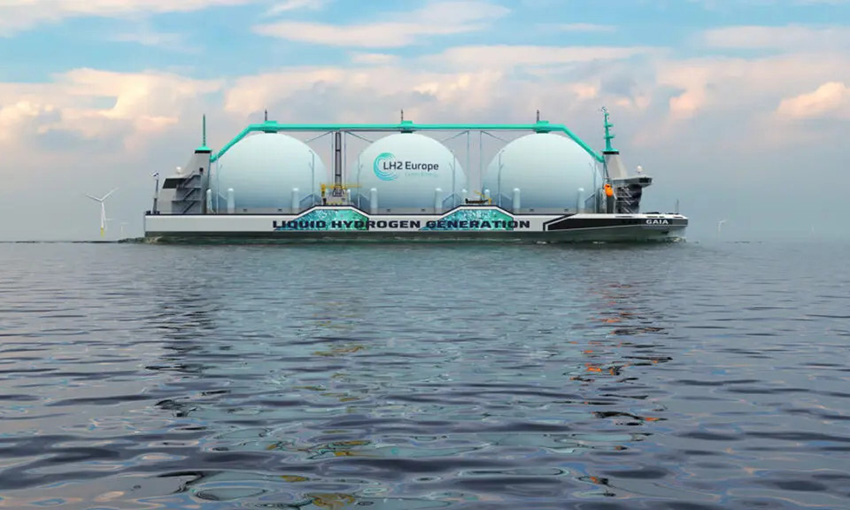C-JOB Naval Architects unveiled a new design for a liquid hydrogen tanker, developed in partnership with green hydrogen development company LH2 Europe.
C-Job Naval Architects have designed a brand new class of liquid hydrogen tanker that will revolutionise the renewable energy market. The tanker concept, developed in partnership with LH2 Europe, is a critical element in realising a green end-to-end liquid hydrogen supply chain.
The new hydrogen tanker is to transport liquid hydrogen produced in Scotland to terminals in Germany.
C-Job CCO Job Volwater said liquid hydrogen provides unique challenges in ship design and engineering.
“As a comparison, LNG tankers use ballast water to compensate the loss of weight following delivery to ensure enough draft. As liquid hydrogen is high in volume but 20 times lighter than LNG, this required a unique solution,” he said.
“We have created a trapezium-shaped hull design which creates enough deck space to fit the tanks without the need for ballast.”
The vessel is powered by hydrogen fuel cells and will be equipped with three liquid hydrogen storage tanks with total capacity of 37,500 cubic metres.
The tanks will have a much lower boil off than those currently used in the maritime industry. The limited remaining boil off will be captured and directly used in hydrogen fuel cells, providing power to the vessel’s propulsion systems, resulting in emissions of water only.
The vessel itself will have zero greenhouse gas emissions during operations.
The ship is expected to be ready and commissioned six months before the first delivery of hydrogen in 2027.
LH2 Europe CEO Dr Peter Wells said hydrogen will be essential to the future of energy.
“It is up to us how quickly we can make that happen. LH2 Europe aims to have a full liquid hydrogen supply chain ready by 2027,” he said.
“We plan to initially deliver 100 tons per day of green hydrogen and ramp up production to 300 t/d within three years, depending on demand.”
Mr Wells said the tanker design is a key step in providing the infrastructure to make that clean energy future a reality.
“Current vessels in operation are not able to deliver hydrogen at the scale we expect will be required to meet the needs of the market,” he said.
The first trial shipment of hydrogen in the world was completed earlier this year. It involved shipping a cargo of liquid hydrogen from Victoria to Japan on the hydrogen carrier Suiso Frontier.

